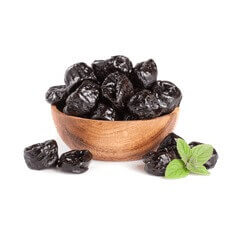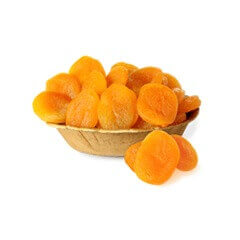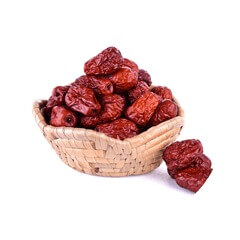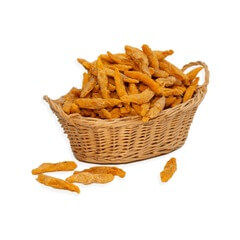Full of sugar and sunshine, dried figs are intimately linked to the Mediterranean. It is also around the Mediterranean that they are mainly produced. However, it is very simple to dry your figs, harvested from July to October, depending on the variety, often in abundance. Especially since figs contain antioxidants, fiber, and nutrients, they will allow you to prolong the summer again and again.
Discover how to dry figs using three methods: in the sun, in a dehydrator, or in the oven. And above all, which varieties to choose to obtain succulent dry sheets?
A Few Words about the Fig Tree
A fruit tree that is not very demanding in terms of maintenance and soil, the fig tree benefits from a wide range of varieties which allow it to acclimatize in different regions of the world. The fig tree just requires good exposure to the sun and shelter from cold winds.
If the fig trees are distinguished by the coloring of their fruits, from white to green, passing through red, purple, and black, they also differ by harvest period. Uniferous varieties produce one harvest per year from August to October. Biferous varieties produce two harvests, in July and autumn. Some varieties are also said to be self-fertile and do not require the presence of other fig trees or the blastophage, a pollinating insect. Therefore, it is necessary to consider these notions to make the right choice.

Figs are harvested from July to October, depending on the variety
However, you may also want to grow a fig tree to make your homemade dried figs. In order to produce dried figs with an incomparable taste, it is essential to choose very sweet figs that have the ability to dry and retain their flavor.
The Best Varieties of Fig Trees to Make Dried Figs
There is not a fig that looks like another fig. Whether round, elongated like a pear, more or less fleshy, more or less firm, sweet, fragrant, or juicy. The Fig is a fruit that can be eaten raw, harvested, or cooked in pies, jam, compote, or chutney. It is also a fruit that lends itself easily to drying, providing you choose the most suitable variety.
In order to obtain a dried fig, firm and tasty, it is important to choose figs full of sugar and not too juicy since the drying of figs consists of evaporating, by different techniques, the water, which constitutes 80% of the fruit. The size of the fruit also comes into play: the small fruits are dried whole, and the larger ones are cut in half.
Let’s take a quick look at the best varieties of figs to dry:
- The Ficus carica ‘Goutte d’Or’ fig tree produces large fruits with sweet flesh and golden yellow skin. It is a biferous variety with a development adapted to small gardens whose fruits reach maturity in early July and mid-August.
The Ficus carica ‘Goutte d’Or’ Fig is ideal for drying.
- The Ficus carica Noire de Caromb fig tree gives fruits with a very high taste quality, purplish blue skin, and very sweet red flesh. It is a very productive biferous variety that is resistant to humidity.
- The Ficus carica “Panachee” fig tree provides mid-August with medium-sized fruits with relatively thick yellow and green variegated skin and red flesh. It is a variety with strong development that can reach 6 to 8 meters.
- The Black Bellone fig tree offers medium-sized fruits with practically black skin and red flesh. A self-fertile variety, it is uniferous and bears fruit in mid-August.

How to Make Oven-Dried Figs?
It is quite possible to dehydrate figs in the oven without cooking them. Admittedly, it is a little long, but the drying will be perfect. The secret lies in the very low temperature.
The steps to obtain a creamy dried fig:
- Preheat the oven to 50°. If your oven does not offer this temperature, choose the lowest and leave the door ajar.
- Cut the fruits, previously washed and dried with a paper towel, in half if they are large. The smaller ones stay as they are. Remove the stems.
- Place them on the oven rack, cut side up, without touching.
- Bake the figs for 36 hours, turning them over halfway through cooking.
- Cool your dried figs before storing them.
How to Dry Figs in the Dehydrator?
It is the ideal appliance for dehydrating fruits and vegetables because the operation is much faster than the oven. Just wash the figs, dry them, and cut the stem as short as possible, and larger fruits will be split in half.
Larger figs can be cut in half before being dried.
Then place them on the dehydrator tray that you set to 40°C. Depending on the model, drying can last from 4 to 20 hours.
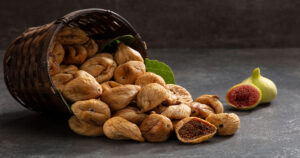
The Natural Drying Of Figs in the Sun
It is parred excellence the traditional drying, which requires a little patience and constancy. You also have to deal with the sometimes unpredictable weather in certain regions. Because by definition, to dry figs in the sun, you need the sun. And an atmosphere without any humidity.
How to Do?
- Carefully wash and dry the ripe, nearly shrunken figs. Remove the stem and cut them in half if they are large.
- Spread them out, without them touching each other, on a cannisse rack, an oven rack, or a crate. Put your head up. Cover with cheesecloth, which allows air to pass through but protects the fruit from insects.
- Put the rack in the sun all day and bring it inside in the evening so that the figs do not suffer from the morning dew. Store them overnight in a warm room.
- Turn the figs in every morning and remove the damaged fruit.
- Depending on the degree of humidity, the intensity of the sun’s rays, and the presence of wind, the figs will dry in the sun between two days and two weeks.
How to Store Dried Figs?
To enjoy your dried figs for as long as possible, you need to store them in a perfectly airtight plastic or glass container, in an iron box, or even in a closed plastic freezer bag.
Store them in the refrigerator or a dry place away from light for one year. Do not forget to indicate on a small label the date of drying.
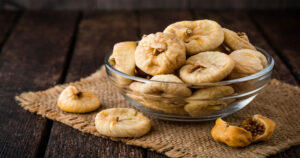
To get the best quality dried figs, Raisins, basmati rice, nuts, seeds, and dried fruits, visit the ADNOOR website. We have been the importers, exporters, wholesalers, distributors, and co-packers of various nuts and grains in Canada for the last 25 years. We are the best rice suppliers in Montreal. We continuously strive to provide our customers with the best quality products at a reasonable price. For more details, visit our website.

